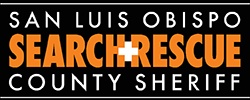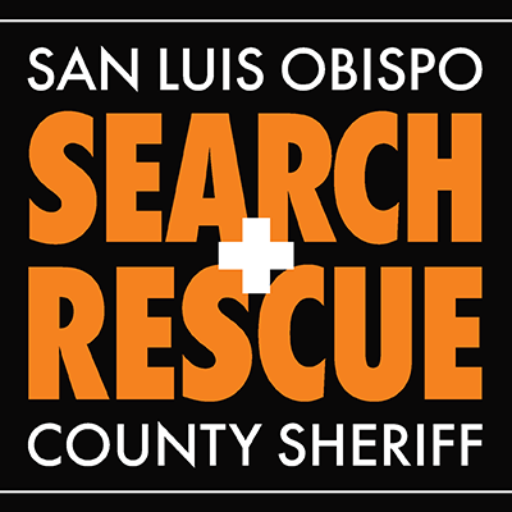
Hiking Tips
Hiking Plan
Tell someone where you are going and when you will be back. Use this hiking form to make sure the important information will be available in an emergency. Give the completed form to a responsible person who, in case of emergency, can share the form with the proper authorities that will assist with search and rescue efforts. Another good idea is to leave a copy of the form on the dash of your vehicle.
Be Prepared
Prepare appropriately for your hike...physically, mentally and with the right equipment. If this is your first hike of the year, start off with short hikes around your home working up to longer trail hikes.
Mental Health
Mental preparation is also very important. Remember if you are hiking trails anywhere in our county you will find yourself in a wilderness environment. Make sure you mentally condition yourself to deal with these conditions such as long steep climbs, temperature fluctuations, wildlife, darkness, and unexpected emergencies such as an injury or becoming lost. Studies have shown those that have a positive mental preparation will have a greater chance of dealing with difficult situations.
Equipment
Taking the right equipment is also important...this means enough water, food, clothing and other equipment to deal with unforeseen situations. Equipment to include are: a flashlight (with extra batteries), first aid kit, toilet paper, emergency blanket, small knife, matches or lighter. You would be amazed at the number of hikers on an afternoon hike get caught by dark - especially those on sunset hikes.
Clothing
Layering is the key. Stay away from cotton clothing, including socks, as it will absorb your sweat and stay wet longer. Synthetic materials that have "wicking" characteristics are a good choice for your base layer. After that use light pile clothing for an insulating layer followed by a rain/wind nylon/Gortex shell. Remove or add clothing as need depending on weather conditions and your body core temperature. Bright clothing is also recommended to provide greater visibility if you become lost or in need of assistance.
Communication
And don't forget two of the most used items that help rescuers to locate you...a whistle and a cell phone. Whistles are heard over greater distances than shouting and do not wear out your voice. SBCSAR has located many people just by hearing their whistle.
Over 75% of the search & rescue calls SBCSAR personnel respond to involved someone using a cell phone. While they can be extremely useful in the front country they have little or no coverage in the backcountry so understand they are not the perfect communication tool that will bring rescue personnel immediately to your aid. If you are venturing into the backcountry consider looking into a Personal Location Beacon (PLB) or a SPOT device that can be activated in an emergency that will give SBCSAR your location coordinates. A satellite phone is another option.
Cell phones can also be used as a signaling device during the night. Should you find yourself lost and without a flashlight, use your lighted cell phone screen by turning it towards any ground search & rescue or helicopters you hear. With their night vision equipment, you will be easier to locate.
Hike with a buddy
Hiking alone, while peaceful and solitary, can cause difficulties should you become lost or injured. Hiking companions can help determine where you are and aid if you get hurt, either by applying first aid or going for help.
Lost?
If you find yourself in an unfamiliar area not knowing which direction to go, sit down for a few minutes and gather your thoughts. Think calmly through your situation. If you believe you can track yourself back to a location where you can absolutely identify where you are then do so. However, it you cannot or you still are not finding the right trail, then immediately stop to prevent wandering further away on an unknown path. If you are somewhere along the front country and have a cell phone then dial 9-1-1 and ask for the Santa Barbara County Dispatch Center. Explain your situation and request search & rescue be activated to find you. If you do not have any reception and you believe you can safely climb to higher ground then do so and try again as this may improve your ability to get a signal. Find an open area so you can be spotted easier from the ground and air. Once you have contacted County Dispatch the important information to quickly give is your name, location, how many are with you and your reason for calling. Further details can be given if needed. Stay put after you hang up! If you move without telling anyone then SBCSAR will have more difficulty in locating you. Stay off of your cell phone as much as possible to save battery power as SBCSAR or Sheriff’s personnel may be calling or texting you back in order to locate you much more quickly.
Natural hazards
Be familiar with some of the natural hazards in the area such as rattlesnakes and Poison Oak. While potentially dangerous, rattlesnakes very rarely are deadly. Unless provoked, surprised or cornered, they will do everything they can to get away from you. The best way to avoid an unwanted encounter is to make noises while hiking and watch where you put your feet and hands. If you do encounter a rattlesnake give it room to escape. Do not poke it with a stick or throw rocks at it as it will only become defensive and strike out. If it doesn’t move out of the way, you will want to walk carefully around it, giving it a lot of space.
Poison Oak is a woody shrub that is related to poison ivy and poison sumac. It is plentiful below 4,000′ and is generally identified by its oily leaves in groups of three. The leaves can be green, yellow, or red and fall off each year. The leaves and stems contain an oil (Urushiol) that causes a nasty, itchy rash in 85% of the population. It’s powerful stuff so treat this plant seriously.
For more information on hiking hazards, please visit the San Luis Obispo County Parks trails website.

